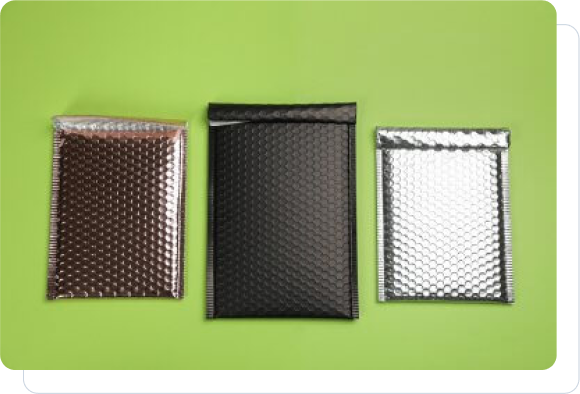Flexible packaging solutions currently revolutionize the e-commerce market. Moreover, it includes lightweight, adaptable materials, such as stand-up pouches, flexible poly mailers, and resealable bags. E-commerce packaging solutions combine product protection with cost reduction and sustainability advantages. The ongoing growth of online shopping has driven businesses to select flexible packaging solutions for e-commerce applications that fulfill modern market requirements. This blog investigates the growing popularity of flexible packaging along with its key features and market developments, and its projected role in online retail.
What Flexible Packaging Means for E-Commerce?
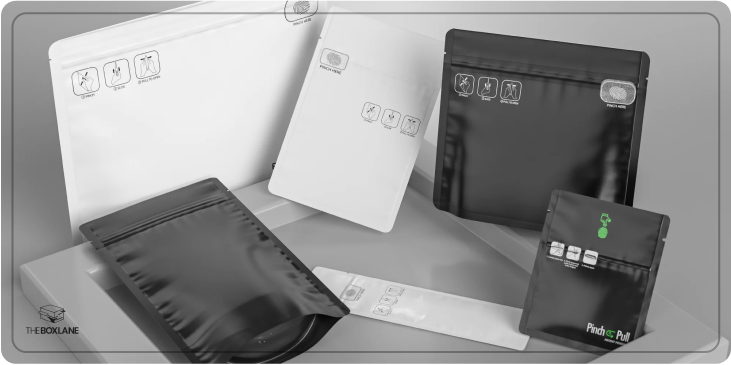
Flexible packaging incorporates elastic materials such as plastic films along with foil or paper, which show high adaptability. Offering e-commerce packaging solutions through pouches and bags, and wraps is one of its functions. Companies depend on flexible packaging for shipping various items, from clothing to electronics and food products, along with beauty items. Space-saving properties and reduced shipping expenses, combined with better customer satisfaction, define its benefits.
Benefits of Flexible Packaging in E-Commerce
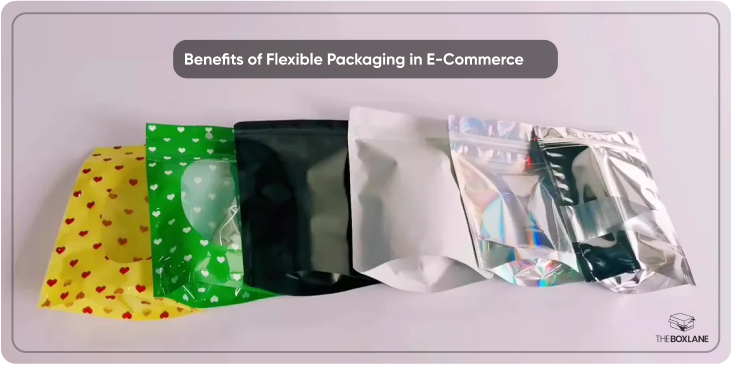
Flexible packaging delivers multiple advantages to companies operating in online markets.
Cost Savings
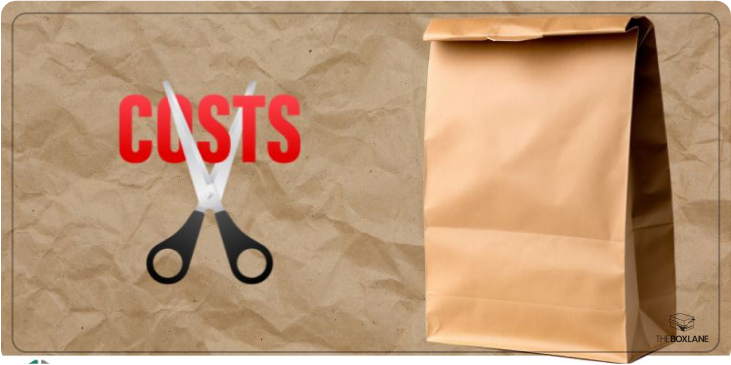
E-commerce brands select flexible packaging because it helps them decrease operational expenses. Flexible poly mailers used as lightweight online shopping packaging weigh less than traditional cardboard boxes do. The reduction in shipping costs occurs because transportation providers charge by weight and dimensions. Cost-effective e-commerce packaging remains affordable because the production costs of materials stay low.
Energy Efficiency
The energy requirements in the supply chain decrease because of flexible packaging solutions. The weight reduction of this material lowers transportation fuel usage, which leads to decreased energy consumption. The production process of flexible packaging materials, including high-barrier flexible packaging materials, results in less energy consumption than manufacturing rigid boxes or glass containers. Flexible packaging delivers higher operational efficiency, which produces financial savings and lowers business environmental impact.
Product Protection
Flexible packaging used for product protection creates secure conditions for the stored items. The protective features of high-barrier flexible packaging materials block entry of moisture while also blocking air and light exposure. The packaging of fragile items includes built-in cushion elements as part of flexible packaging designs. The resealable zippers on packages enable customers to maintain product organization after initial use, thus improving their user experience.
Space Efficiency
Space-saving flexible packaging takes up less volume when compared to rigid alternatives. Flexible pouches and bags possess high compressibility, which allows warehouses to maximize their storage capacity. The packaging design requires smaller shipping containers because of its compact dimensions. Business operations experience better logistics capabilities at a reduced storage cost.
Sustainability
Sustainable, flexible packaging for e-commerce fulfills persistent environmental requirements. The adoption of recyclable flexible packaging for online stores and compostable flexible pouches for e-commerce reduces waste generation. Eco-friendly flexible packaging provides benefits to environmentally aware consumers who trust such brands through sustainability initiatives.
Market Growth and Trends
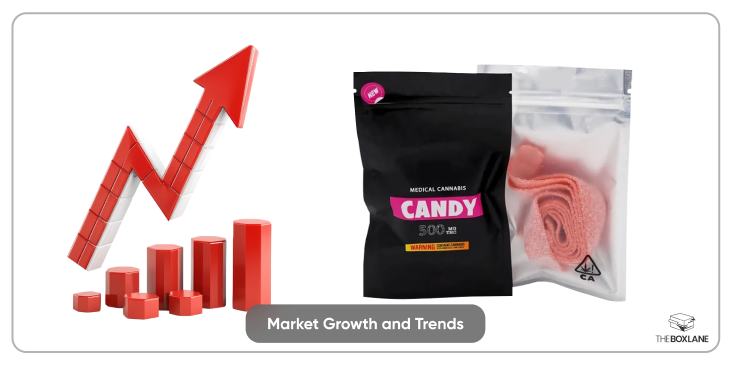
Experts predict that the e-commerce flexible packaging market will expand at a 5-7% annual rate throughout the next five years. The market continues to expand because of multiple influencing elements.
Online Shopping Boom
The increasing popularity of online shopping created more urgency for companies to develop flexible shipping packaging.Businesses require solutions that safeguard products while keeping costs low. Flexible packaging innovations satisfy market needs, which drives the growth of e-commerce flexible packaging trends.
Technology Advances
Modern technology developments guide packaging trends for e-commerce brands. Digital printing on flexible packaging enables custom flexible packaging. Smart, flexible packaging with tracking features such as QR codes provides new functionality benefits to users. New innovations deliver better unboxing satisfaction, together with enhanced security features for products.
Eco-Friendly Focus
Businesses purchase environmentally friendly packaging items because it matches how their clients want to see their products presented. The market is embracing sustainable e-commerce packaging solutions, which now include low-carbon-footprint packaging for e-commerce. Online retail will benefit from more sustainability through this growing trend.
Customer Convenience
Online shoppers put convenience at the top of their requirements. Flexible packaging that incorporates zippers or easy-open features provides better usability to consumers. Online retailers benefit from stand-up pouches, which provide e-commerce delivery, while flexible apparel packaging delivers enjoyable and accessible products to their customers.
Sustainability and Regulations
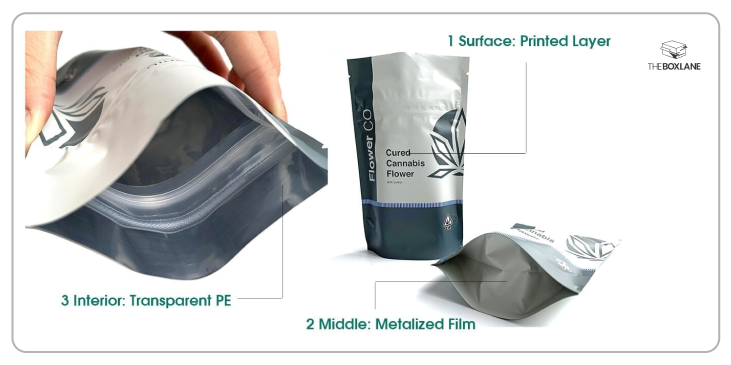
Flexible packaging has become prevalent because sustainability stands as its main driving force. The online market requires sustainable, flexible materials that meet consumer expectations about eco-friendly packaging. The use of recyclable or compostable materials receives official support under North American regulations. Shipping optimization, together with waste reduction, occurs through USPS-friendly flexible packaging solutions. The rules promote standard compliance and draw customers who care about the environment.
Regional Leaders in Flexible Packaging
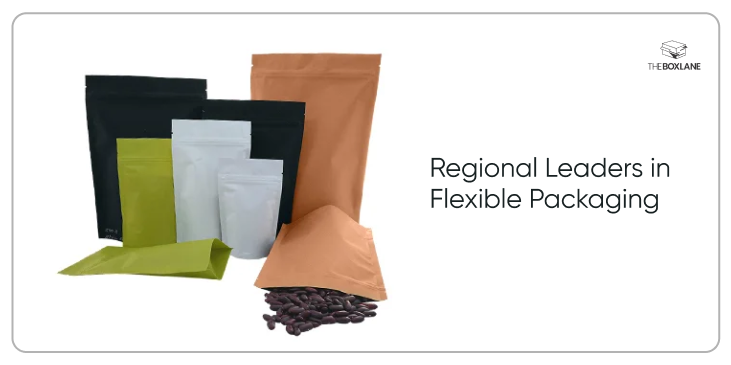
The flexible packaging market receives its greatest demand from the Asia-Pacific region because of its advanced manufacturing capabilities and expanding e-commerce industry. Countries like China and India leverage cost-effective solutions such as flexible packaging for food delivery services and beauty products.
The flexible packaging market in North America demonstrates excellent development opportunities at present. Innovation and a focus on sustainability fuel its expansion. The flexible packaging suppliers in the USA create innovative materials to fulfill market needs while supporting the growth of wellness and health products.
Technology and Social Media Influence

Online orders experience growth because of smartphone technology adoption in e-commerce. The packaging methods used in e-commerce are influenced by social media platforms. Custom printed flexible packaging for e-commerce brands produces unboxing situations that can be shared with customers. The personalized design elements in e-commerce packages build consumer devotion to brands while making packages more noticeable on the market.
Flexible Packaging vs. Rigid Packaging
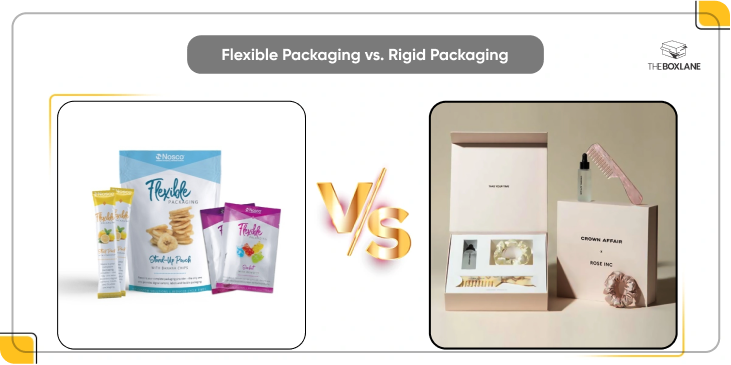
The packaging format of flexibility distinguishes itself from traditional packaging materials such as cardboard boxes and plastic containers.
- Weight: When comparing flexible packaging vs rigid packaging in e-commerce, flexible options facilitate transportation expenses because they use lightweight ecommerce packaging.
- Space: Flexible packaging vs cardboard boxes takes less space in storage and transportation.
- Design: Flexible packaging design for e-commerce enables manufacturers to achieve more innovative solutions than traditional rigid boxes do.
- Sustainability: Comparing flexible and rigid packaging for online shipping shows that flexible packaging stands superior for sustainability purposes.
Rigid packaging remains suitable for protected items, yet flexible packaging shows its ideal fit for most e-commerce deliveries because of its performance and versatility.
Industry-Specific Uses
Flexible packaging works perfectly for different market segments. Flexible packaging for food delivery services preserves freshness. Flexible packaging for beauty products in e-commerce provides sleek designs. Flexible apparel packaging for online retailers optimizes space. Flexible packaging for health and wellness products provides both safety measures and attractive packaging design.
Big Players and Policies
Major platforms influence packaging decisions. Amazon's flexible packaging policies adopt lightweight sustainable packaging solutions. Shopify packaging recommendations advocate for custom flexible packaging. These applied policies track trends in e-commerce, flexible packaging 2025.
The Future of Flexible Packaging
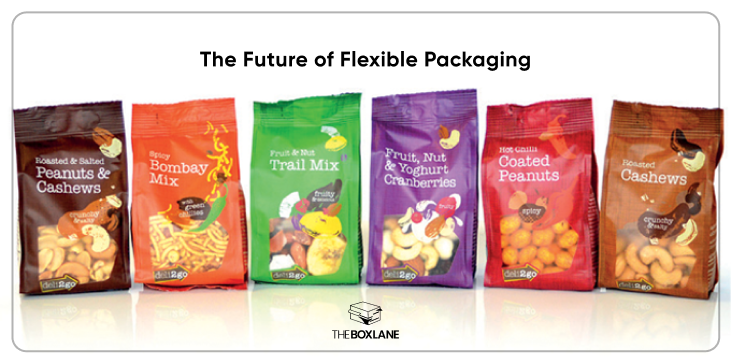
The future of flexible packaging in online retail is bright. The market trends show growing interest in developing sustainable e-commerce packaging solutions, which include compostable pouches. The market will see expanded smart features that will enhance customer engagement. The flexible packaging market growth projections for 2025 indicate major expansion, which will be most prominent in the Asian-Pacific regions.
Conclusion
Flexible packaging has gained popularity in e-commerce operations because of its useful characteristics. The reduction of shipping expenses, along with product protection together with sustainability benefits form the core advantages of flexible packaging. Modern requirements receive satisfactory solutions through lightweight packaging for delicate items and customized designs. Flexible packaging remains crucial for the development of online retail because it advances industry efficiency through continuous innovation.


